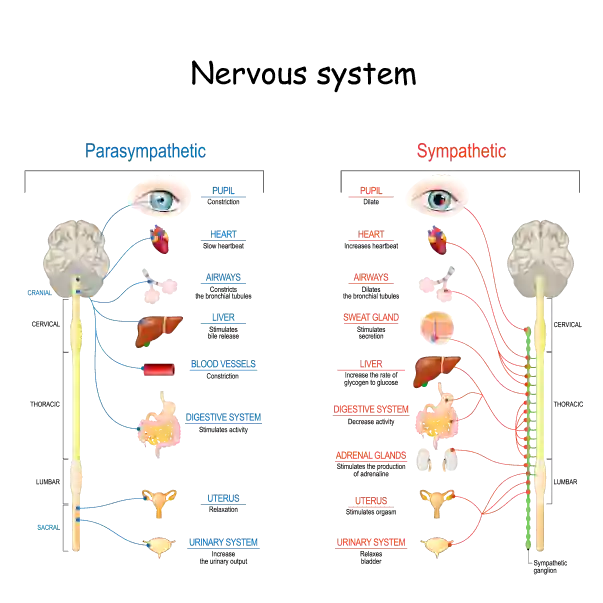
Relax And Unwind With Yoga Nidra
Discover a place of peace and relaxation with Yoga Nidra, a simple but powerful practice to help you reset your nervous system and revitalize mind and body. Whether you’re feeling stressed and overwhelmed, or are simply in need of a reset, this ancient yogic technique will help you find inner balance and peace
Derived from the Sanskrit words “yoga” meaning integration, and “nidra” meaning sleep, Yoga Nidra is a guided meditation practice that takes you into the deepest state relaxation, a place between waking and sleep – a “conscious sleep”, where you can enjoy being completely relaxed while remaining mentally alert
Nidra is a guided practice which helps you access the depths of your consciousness to release trapped emotions, calm your nervous system, and awaken your body’s natural ability to heal itself
Your Nervous System: Regulator Of Health And Well-Being
Together with the immune and hormonal (endocrine) systems, your nervous system plays a central role in orchestrating and regulating all bodily functions, from digestion, breathing and blood pressure to how you think, feel and respond to stress
Tough text-book doctrine would put the nervous system centre stage as the great regulator of all, real life is always messier, more complex and infinitely more interesting: thus, the idea of a specialized portion of the nervous system dedicated to dealing with stress no longer holds water
Every moment of every day your mind and body have to respond flexibly to an ever changing environment. This happens through a complex orchestration of multiple systems – the nervous system, certainly, but also the hormonal (endocrine) and immune systems and more
Cortisol & Stress
Central to the hormonal response to “stress” is the steroid hormone cortisol. Released from the adrenals, cortisol is under the control of secondary messengers secreted by parts of the brain and pituitary gland in response to the perception of stress. Cortisol mobilizes multiple systems to provide the energy for your body to rise to the challenge
The immune system is the great defender from external threats. Not so long ago considered to act autonomously, the immune system is now known to be intimately integrated with the activities of the other great regulatory systems, affecting and being affected by both the nervous and endocrine systems
Thus, stress (a cognitive event) is pro-inflammatory (an immune activity), while inflammation and infection bring about mental depression, malaise and sick behaviour
Recent studies have also established a significant role for the community of microbes living in your gut, the microbiata, in stress, emotional regulation and immune activity. The microbiata can affect not your just your gut, but also how you think and feel, and how well you fight infection
Nevertheless, on the basis that the mind – thinking and feeling – is at least in part associated with the brain there is a point to discussing the nervous system with relation to stress
The pivotal role of the nervous system in stress is also highlighted by studies showing that electrical stimulation of a single, albeit paired, nerve known as the Vagus leads to a measurable anti-stress response, slowing the heart, reducing blood pressure, suppressing inflammation and generally relaxing the whole system
Autonomic Nervous System
For the purpose of study the nervous system may be divided in several ways:
The central nervous system (CNS) comprises the brain and spinal cord, where information is processed, while the peripheral nervous system (PNS) comprises a collection of nerves carrying information to (sensory) and from (motor) the CNS
The nervous system is also studied in terms of a somatic, or voluntary, nervous system, responsible for movement, posture and sensory perception, and an autonomic nervous system (ANS) dealing with involuntary internal processes such as breathing, heart rate, blood pressure, digestion and more
The ANS can be further divided into
- a sympathetic system (SNS) which up regulates bodily functions to fight-or-fly in response to stress, and
- a parasympathetic nervous system (PSNS) which reduces arousal to promote relaxation and help the body rest-and-recover
Far from being antagonistic the two arms of the ANS work in concert to create a level of arousal, or autonomic tone, appropriate for any given situation
While a well regulated nervous system is the basis for optimal health and wellbeing, an out of balance or exhausted nervous system can lead to a wide range of physical and mental health issues, from chronic stress, anxiety and insomnia, to dysregulation of any and all your vital organ systems, including immune disorders such as allergy, autoimmune disease and other damaging inflammatory processes

Reframing Stress
While external conditions may trigger a stress response, the same is true of internally generated scenarios arising from memories of past events, conditioning and innate personality traits: whether you’re dealing with a major plumbing emergency, or an internally generated fear or worry, the same stress response is triggered, with similar consequences for your physical and mental health
Thus, building coping tactics, re-framing perceived stressors and generally developing greater resilience are key to mitigating the harmful effects of stress
Yoga Nidra offers a unique way of calming and resetting your nervous system. Translating from Sanskrit as yogic sleep, nidra takes you to the deepest level of relaxation, activating the rest-and-digest parasympathetic nervous system to calm your mind, support healing and repair and help you enjoy a positive state of well-being
During a Yoga Nidra practice you are more able to access the subconscious mind, where deep-rooted thought patterns and emotions reside. By releasing these trapped emotions, you create space for new perspectives, increased self-awareness, and emotional healing. This not only benefits your mental and emotional well-being but also has a positive impact on your physical health
A Guide To Practicing Yoga Nidra
Yoga Nidra is structured step-wise practice where you follow a guided meditation
Start by setting the scene:
1. Find a quiet and comfortable space: choose a space where you won’t be disturbed during your practice. Create a comfortable environment by using cushions, blankets, or a yoga mat. Adjust the lighting and ambient temperature for maximum comfort
2. Assume a comfortable position: Sit or lie down comfortable on your back. Close your eyes and allow your body to fully relax to the pull of gravity
3. Find a suitable script. Listen to the Yoga Nidra recording below. Or look around for other recordings and apps that offer guided sessions.
Follow the instructions and let yourself to be guided into a state of ease and relaxation
4. Set an intention: Though not essential, you may want to take a moment to set an intention for your practice. How would you like to benefit from practising nidra? It might be anything from releasing stress to cultivating self-love, improving your relationships or finding inner peace.
5. The formal practice starts with a body scan, where you bring your awareness to different parts of your body before moving onto the breath
As you delve deeper into the practice, you will be guided through visualizations and imagery. Allow yourself to fully immerse in these experiences and explore the depths of your consciousness
6. Awaken slowly: Towards the end of the practice, you will be guided to gradually bring your awareness back to your body and the present moment. Take your time to transition back, slowly opening your eyes and moving your body.
7. Reflect and integrate: After your practice, take a few moments to reflect on your experience. Journaling or simply sitting in silence can help you integrate the insights and emotions that may have arisen during the practice.
Remember, consistency is key when it comes to reaping the benefits of Yoga Nidra. Aim to practice regularly, even if it’s just for a few minutes each day. With time and dedication, you will experience the transformative power of this ancient practice
Benefits of Practicing Yoga Nidra
The benefits of Yoga Nidra practice are many, and encompass many aspects of your well-being. Here are some of the key benefits you can enjoy:
1. Deep relaxation: Yoga Nidra induces a profound state of relaxation, allowing you to release tension and stress from your body and mind.
2. Improved sleep: Regular practice of Yoga Nidra has been shown to improve sleep quality, helping you achieve a deeper and more restful sleep.
3. Reduced anxiety and stress: By activating the relaxation response, Yoga Nidra helps reduce anxiety and stress levels, promoting emotional well-being.
4. Enhanced creativity and focus: The practice of Yoga Nidra cultivates a state of heightened awareness and mental clarity, enhancing your creativity and ability to concentrate.
5. Emotional healing: Through the exploration of the subconscious mind, Yoga Nidra allows you to release trapped emotions and heal emotional wounds.
6. Increased self-awareness: Yoga Nidra provides a space for self-reflection and introspection, enabling you to develop a deeper understanding of yourself and your patterns.
7. Improved physical health: Resetting your nervous system through Yoga Nidra will have a positive impact on your physical health, improving digestion, boosting immunity, and reducing inflammation and chronic pain.
The effects of nidra on the cardiovascular system cannot be understated. By reducing arousal nidra helps lower blood pressure, inflammation and other contributers to that great killer of our age, cardiovascular disease
By incorporating Yoga Nidra into your daily life, you can experience these transformative benefits and more. It’s a practice that will truly revitalize your mind, body, and spirit
Practical: A Short Yoga Nidra To Help You Rest & De-Stress
Conclusion: Embracing the Transformative Power of Yoga Nidra
In a hectic and at times chaotic world, Yoga Nidra can offer you precious moments of deep relaxation and inner peace, with its simple yet profound practices to calm your nervous system, and awaken your body’s inherent tendency to health and wellbeing
So, if you’re feeling overwhelmed, stressed, or just in need of a quiet moment, just find a quiet place, sit or lie comfortably, and let yourself be transported to the healing space of Yoga Nidra
The Mind Body Connection: Finding Health In An Age Of Stress
What Is The Mind Body Connection?Since the intention of this blog is to explore the many facets, practices and benefits of natural health and healing, it seems apt to begin our journey with a discussion of a central pillar of natural healing: the mind body connection...
Yoga And Mindfulness For Dysfunctional Breathing: 5 Exercises For Better Health
Did you know breathing too much carries a health warning? Beyond gas exchange, how you breathe affects all your systems, from digestive and cardiovascular function to emotional health
Science Of Healthy Breathing: How To Recognize And Manage Breathing Pattern Disorder
How you breathe not only serves not just to drive energy production, but also impacts your whole emotional as well as physical well-being
